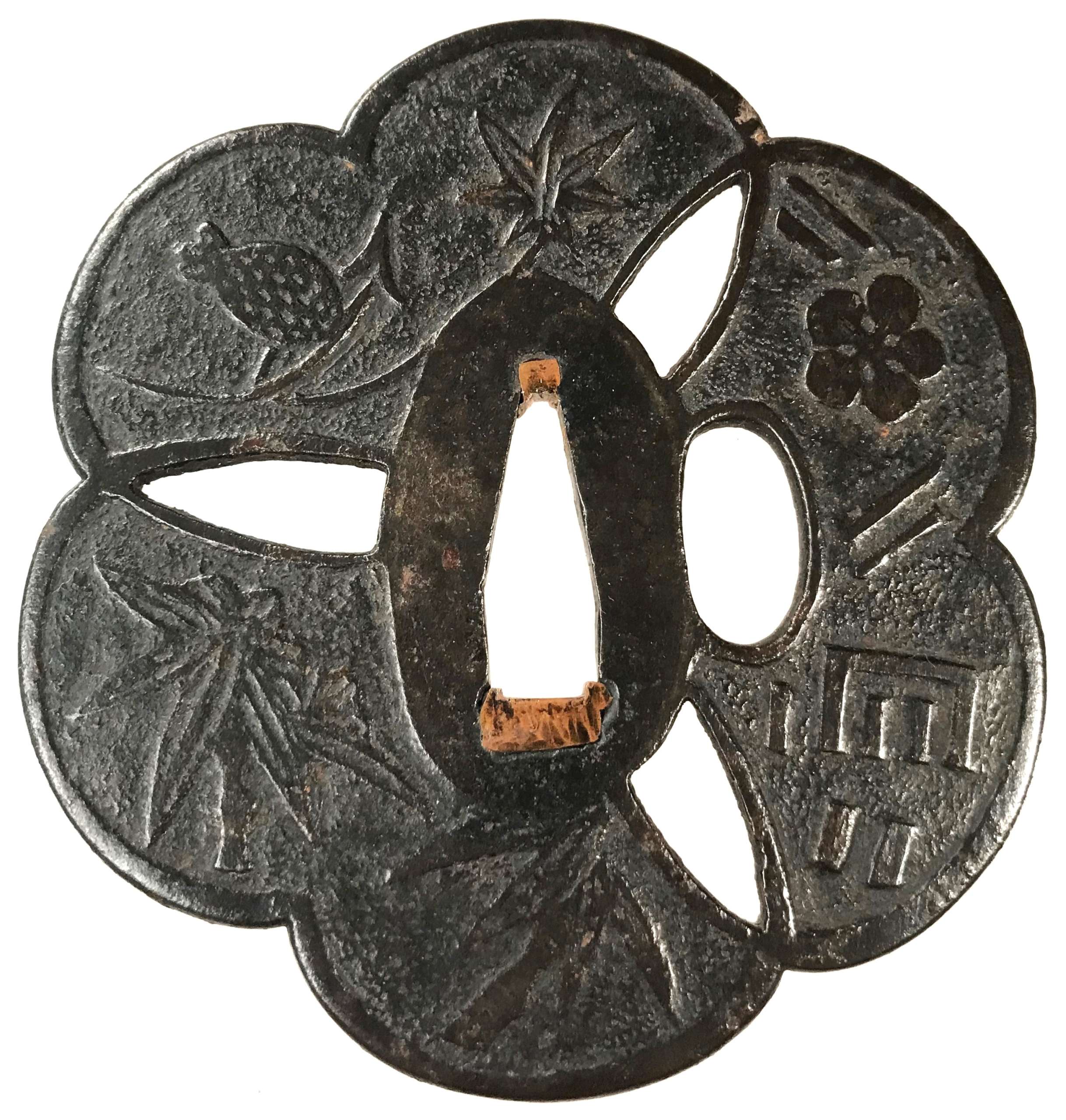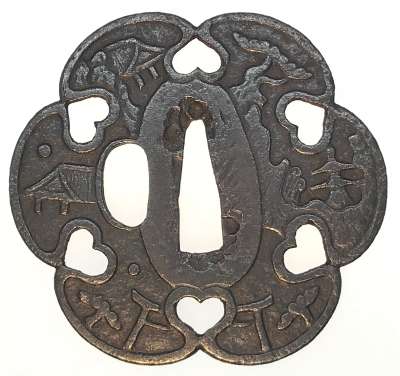Kamakura-bori tsuba is a stepchild. Every other school of the Japanese sword mountings has if not a whole book then at least a chapter dedicated to it. But not the Kamakura-bori school. If you google “Kamakura-bori tsuba” you’ll find a few links that make sense; among them: Jim Gilbert, and Robert E. Haynes & Elliott Long’s SHIBUI SWORDS & TSUBA. With this compilation I am humbly trying to close the gap.
1. Name
There is no single opinion regarding how to name this type of tsuba. Some call it “Kamakura tsuba” and some “Kamakura-bori tsuba“. The latter name makes certain sense for two reasons: (1) to avoid confusion with the Kamakura period of Japan’s history (Kamakura jidai, 1185–1333), which has nothing to do with Kamakura-bori tsuba; (2) to emphasize that the name was actually derived from the “Kamakura style of lacquering“[1] or Kamakura-bori. “Bori” or “horu” (voiced “boru“) means “to carve”[7].
In the Lundgren Collection’s Christie’s Auction, 1997, on page 8 under №13, we find the following explanation of the name: “The term is derived from the method of lacquer carving known as tsuishu and tsuikoku which is seen in both black and red lacquer”[2].
“The word kamakura is derived from the style of wood carving known as kamakura bori. Some have thought that this name implied the tsuba of this style were made in the Kamakura age, but this is not the case. […] In early times they [such a tsuba] were called Kanto tsuba in Kyoto and Kamakura tsuba in the city of Edo“[3].
“The name Kamakura was first used during the Meiji period (1868-1912)… It was called Odawara-tsuba in the Kanto area (Tokyo) and Kanto-tsuba in the Kansai area (Osaka), prior to the generic name of Kamakura-tsuba becoming common. They were produced during and became prevalent around the end of Muromachi to the late Momoyama period and there are none with signatures”[4].
European understanding of the Kamakura-bori tsuba at the end of the Meiji period was rather vague. Henri L. Joly writes in 1912: “The Kamakura style with low relief decoration and perforations seems to have become fashionable after so-called Kamakura Hōjō rule — an expert in the Token Kwaishi places them in the Sixteenth Century as the oldest possible date… The subject is a difficult one, full of contradictions owing to the absence of absolutely reliable records”[5].
The term Kamakura-bori tsuba in Western literature first appeared in San Francisco at the Butterfield & Butterfield auction catalogue “Important Japanese swords, sword fittings and armor” in 1979 – under №66: “Kamakura bori work of the Muromachi period. Round thin plate with some small iron bones in the edge. Carved with design of plants (sego palm) rocks, and waves on the face. The back has half of two chrysanthemums, waves, clove, and sego palm leaves. The kozuka-hitsu has been added and later enlarged. A good typical example without the rim most have. Diameter: 7.7 cm., thickness 2.5 mm. Estimated price $100-200″[6]. There will be more on the meaning of the palm symbol in the ‘Motifs’ section below.
 Fig. 1. Kamakura bori work of the Muromachi period. Butterfield & Butterfield, 1979; №66. |
 Fig. 1a. Kamakura-bori tsuba (face). Varshavsky Collection № TSU-0352.2018. |
 Fig. 1b. Kamakura-bori tsuba (reverse). Varshavsky Collection № TSU-0352.2018. |
The Butterfield & Butterfield description is not without the flaws. Sego palm is probably a sago palm, cycas revoluta, sotetsu (蘇鉄). The comma before the ‘rocks’ is missing. As the sago palm mentioned on both face and reverse, we can conclude that the author assumed sago palm leaves to be hanging on the top of the plate. I believe that the sago palm is the formation between 2 and 4 o’clock on the face, while the hanging leaves at 12 o’clock are from another plant, e.g. a hemp palm (shuro, 棕櫚) or even an orchid (ran). The reed (ashi) clearly visible on the face ( 8-10 o’clock) and on the reverse (2-3 o’clock) is messing. I agree regarding the kozuka hitsu-ana. Absence of the rim “the most have” is rather interesting and may change the overall perception of the piece as a Kamakura-bori specimen. Dimensions: Height: 76.8 mm, width: 76.1 mm, Thickness at seppa-dai: 3.3 mm, at rim 2.0 mm. Height of nakago-ana: 29 mm.
Since this publication in 1979 Kamakura-bori tsuba is the most frequently used term, however occasionally we can see Kamakura tsuba, Kamakura school tsuba, Kamakura style tsuba and even Kamakura bori-fu tsuba. “Fū – style, manner. Used as a suffix to say that something was made/interpreted ‘in the style of'”[7].
2. Place and Origins
We have to admit that there is no experts agreement regarding the exact place of origin of the Kamakura-bori tsuba. It’s either Nara, or Kyoto, or the vicinities of modern Tokyo.
“One theory of their [Kamakura-bori tsuba] origin holds that they were made in Nara, an idea supported by an extant piece signed WASHU JU YOSHIKANE. “Washu” being an old name for Yamato, in present-day Nara Prefecture”[8].
Some suggest that this type of tsuba have its origin in Kanto plain, in central Honshū, somewhere near the place where the city of Edo was built later on in the 17th century. “In the past, Kamakura-bori tsuba have been known as Odawara or Kanto (Tokyo area) tsuba, thus they were assumed to have been made in that region. There is a strong probability however, that they were made by a group in Kyoto. No signed examples are known”[2].
Contemplating about the origins of Kamakura-bori tsuba, Robert E. Haynes provides the following example:

Fig. 2. Kirikomi-mokkō shape tsuba, ca. 1400.
“Iron plate of kirikomi mokkō shape (open inome indentations), of overall round shape. This very thin plate is indicative of the period when this tsuba was made which is ca. 1400. This same type and thickness was to be used by the Kaneie school about 50-100 years later. There is a wide groove carved at the rim area with a line carved on the inside of the groove. This is repeated on the reverse. The hitsu-ana seems to be original, but the tsuba might have been mounted originally on a tachi and the hitsu added later when it was mounted on a katana. This style of tsuba is the origin of the Kamakura bori tsuba. […] A study of the relationship of the various styles and schools of the Muromachi period has not been done as of now, but it will show that the plate makers of the Muromachi were probably not the ones who decorate their plates and the two groups worked side by side but each were separate artists”[9].
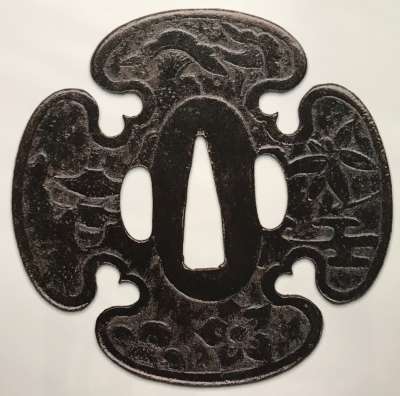
Fig. 3. Kamakura-bori tsuba, ca. 1400-1450.
“Iron plate of kirikomi mokkō shape (open inome indentations). The thin plate is carved with flowers, trees, and landscape in low relief on both sides of the plate, but with different designs. The surface retains much of the original black lacquer surface, and is rare in this respect. This is the earliest classical style of Kamakura-bori tsuba. From the position of the carved design it is clear this tsuba was to be mounted on a katana. The hitsu were added later. This early Kamakura bori example […] shows the style of the Muromachi period ca. 1400 to 1450. Kamakura bori tsuba were made as late as the early Edo period ca. 1650, but they show their young age and the subjects used in the designs were far different than the ones seen in this tsuba”[9]. Robert E. Haynes further speculates that the Onin-tsuba and the Kamakura-bori tsuba both originated from the same parent, the tsuba on Fig. 2, see above.
This theory is supported by Graham Gemmell: “In simple terms Onin works are decorated Ko-Katchushi tsuba. … But, not content with iron alone, they began to decorate it with what was, in the early Muromachi period, a rare and valuable metal, brass. The Onin workers cut the design into the iron, using narrow channels, cast the brass, piece by piece, and then hammered it into the iron plate as though they were putting together a jigsaw. When complete the tsuba would be black lacquered exactly as the plain iron ones had been, the brass shining dully through it in a way that fulfilled the goal of shibui or restrained elegance”[1]. We can easily see that these words about Onin-tsuba may be fully applied to the Kamakura-bori tsuba (Fig. 4A and Fig. 4B).
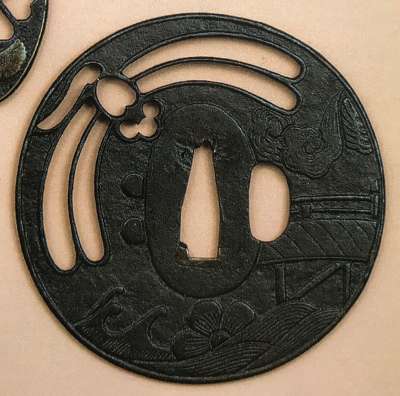 Fig. 5. A Kamakura-bori tsuba with a dragonfly in openwork, 16th century. |
 Fig. 4A. Ko-Katchushi tsuba with a dragonfly in openwork, Field Museum. |
 Fig. 4B. Sasano Collection №39. Ko-Katchushi tsuba. Nanbokucho period, Late 14th century. |
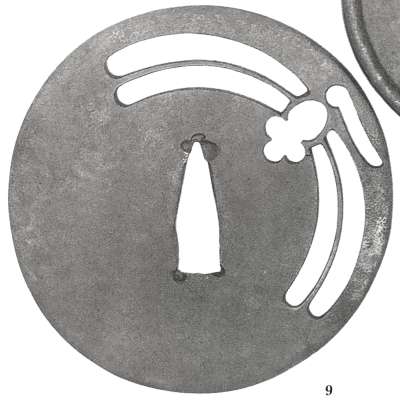 Fig. 4C. Caldwell Collection/Sotheby’s №9: A Tosho tsuba, Momoyama/Early Edo, 16th/17th century. |
 Fig. 4D. Caldwell Collection/Sotheby’s №20: Heianjo tsuba, Momoyama period, late 16th century. |
Fig. 4A: “Iron tsuba with decoration chiseled in silhouette. “Skillfully cut in negative silhouette is the dragon-fly, to be seen in Fig. 3 of Plate VI. The tsuba is thin, of dark brown iron, and resembles the work of the armorers [Ko-Katchushi]. A larger guard with rounded rim, but with similar design and like treatment is attributed by P. Vautier (Japanishe Stichblätter und Schwertzieraten, Sammlung G. Oeder, p. 2, No 3) to the Myōchin workers of the fourteenth or fifteenth century”[10].
Fig. 5: “Sword guard with design of a dragonfly, a cloud, a flower, a bridge and waves. Unsigned. Kamakura school. Vertical L., 8.60 cm, horizontal L. 8.50 cm, Th. of rim 0.30 cm. Iron. Openwork and sukidashi-bori relief. Muromachi Period, 16th century.”[11].
Fig. 4B shows the same design in Ko-Katchushi school[29], Fig. 4C – in Ko-Tosho school[36], and Fig. 4D – in Heianjo School[36].
3. Time
Robert E. Haynes provides an example of Kamakura-bori tsuba that he dates 1300 AD.
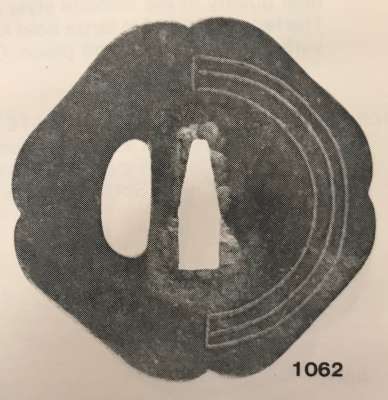
Fig. 6. Kamakura-bori tsuba, 1300 AD. Catalog #4. Robert E. Haynes, 1982.
The description reads: “Very early Kamakura-bori style example. The thin plate is well forged and has some iron bones in the edge. The kebori of three lines on the face is repeated as two lines joined at the ends on the reverse. The Mt. Fuji shape mokkō is very rare for this early time and shows great sophistication. With the unknown meaning of the carved line, this is a great study piece. Ca. 1300. Ht. 7.4 cm., Th. 2 mm”[12].
In his Catalog #5, on pages. 4-5 Robert E. Haynes states: “At the earliest, they [Kamakura-bori tsuba] were made at the beginning of the Muromachi age. In reality they are one type of Katchushi tsuba“[3]. [SV: Muromachi period started in 1336 and ended in 1573; this R.E. Haynes’ statement contradicts his own attribution of tsuba №1062 in Catalog #4, illustrated here on Fig. 6 just above: 1300 AD belongs to Kamakura period]. Further, the author discriminates three periods of Kamakura-bori tsuba production: “(1) Kamakura tsuba of the first period date from early Muromachi age to the end of this age. (2) The second period was an imitation of the first period. They were made during Momoyama age. (3) In the early Edo age a third period of production concentrated on copying the imitations of the Momoyama age. The style became more naturalistic and complicated in design in each successive period”[3].
Whatever we think about the example illustrated on Fig. 6, and whether we believe it is indeed a Kamakura-bori tsuba or not, the following tsuba on Fig. 7 just below (№26 from Catalog #5, pp. 16-17) is attributed by R. E. Haynes to ca. 1350: “Large classical Kamakura-bori example. The face carved with the pagoda, bridge, and hills design in the usual low relief. The reverse side with the same design except large kiku (chrysanthemum) flower where the bridge appears on the face. The edge shows much wear and may have been cut down slightly… The hitsu-ana were added later… The age of Kamakura-bori tsuba is in dispute, but it would seem the large examples of this type are probably earlier than had been thought (1450) and should date ca. 1375. Ht. 8,4 cm., Th. (center) 2.75 mm., (edge) 2.5 mm”[3].
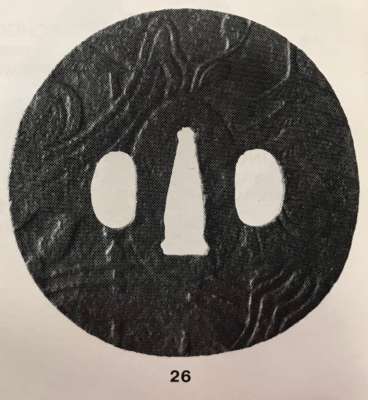
Fig. 7. Kamakura-bori tsuba (№26 from Robert E. Haynes Catalog #5), ca. 1350.
Almost similar tsuba is illustrated at “Art of the Samurai” on page 232, №140:

Fig. 8. Kamakura-bori tsuba. Muromachi period, 16th century.
The description reads:”Kamakura tsuba with Sangatsu-do tower and bridge. Muromachi period, 16th century. 83 mm x 80 mm. Unsigned. Tokyo National Museum. The mountain pavilion and bridge carved in sunken relief on the iron tsuba – both part of Tōdai-ji, a temple in Nara – are detailed in fine kebori (line) engraving. As a result of the chiseling used to create the relief, the ground of the piece is relatively thin”[8].
An early Muromachi period Kamakura-bori tsuba can be found at Sotheby’s sell of Professor A. Z. Freeman and the Phyllis Sharpe Memorial collections under №7 on pp. 12-13:

Fig. 9. Kamakura-bori tsuba, early Muromachi period (1393-1453).
“№7 — Early Kamakura-bori tsuba, early Muromachi period (1393-1453) of quatrefoil form with double grooved rim and inome, the iron of good color and with traces of original lacquer. 9.4 x 8.8 cm, Thickness at center 3.05 mm [wow, what a precision!], thickness ate rim 2.1 mm. Ex Masayuki Sasano collection. With tomobako, bearing a hakogaki by Masayuki Sasano, with the rating Shu“[13]. A very look alike tsuba is illustrated on Fig. 2 above, though Robert E. Haynes does not attribute it to Kamakura-bori type, suggesting that it is a pre-Kamakura-bori tsuba.
Most experts thus agree, that the early Muromachi period Kamakura-bori tsuba did not have openings, and that sukashi elements as well as the hitsu-ana were added afterwords. The pieces made later, in the middle of 15th century, have had original hitsu-ana and were pierced with ko-shikashi. Robert E. Haynes gives us a representative example under №14 on page 27 of his Catalog #7:
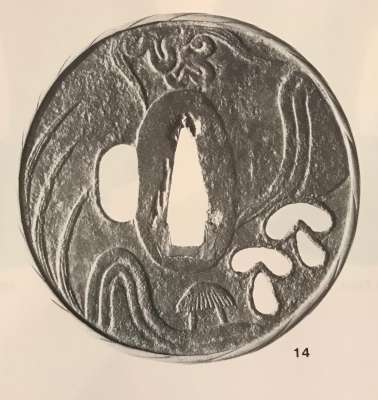
Fig. 10. The hitsu-ana and the two sukashi mushrooms have raised outline borders. Ca. 1450.
“The face is carved in low relief with mountains, grass, clouds and a tea hut. The hitsu-ana and the two sukashi mushrooms have raised outline borders. The rim has a very fine copper wide rope pattern fukurin of very fine color, in the northern style. Ca. 1450. Ht. 8.2 cm, Th., (center) 2.5 mm”[14]. There is no explanation of what is ‘northern style’ whatsoever. [‘Fukurin‘, according to Markus Sesko, is an “ornamental rim trimming of a tsuba“[7].
Attribution of the age of the Kamakura-bori tsuba is based on the following features: thickness and color of the plate, and the design of openwork elements. On Fig. 11 we can see the difference between the ‘older’ and the ‘newer’ tsuba. Robert E. Haynes’ Catalog #9 on pp. 24-25 conveniently provide us with a side-by-side comparison[15]:

Fig. 11. №21 – tsuba of ca. 1425; №22 – tsuba of ca. 1500.
№21 — “Very fine early Kamakura bori example. In this case the style and the plate treatment show the earliest form of the classical Kamakura-bori tsuba. The plate shows some surface hammer work which we do not see in the later work. The edge is delicate and well formed, but the mokko shape has been heightened at a later date. […] This one seems to date about 1425, very early in the style. Height 7.7 cm., Thickness 3 mm”.
№22 — “A fine later Kamakura bori style tsuba. This style is more typical of the later work. The fan panel designs, the bridge, birds and plants, with the cherry sukashi, all were used by the school for over two hundred years. The hitsu seems original. Ca. 1500. Height 8.8 cm, Thickness 3 mm”. I would attribute this tsuba to at least year ca. 1600.
Despite of almost the same size and thickness, we can see that №21 tsuba’s plate is of darker color, almost black; also its openings – the hitsu-ana and the ko-sukashi (clove) – are surrounded by an elevated rim, “a border of raised niku (an interpretation called fuchidori). This trimming is insofar important to judge if the sukashi elements… are ubu, i.e. original to the piece” [Markus Sesko, p.58[7]]. Though the openwork cherri blossom seems to be original to the tsuba №22, the piece is of later making altogether. We see the fuchidori-sukashi on Fig. 10 as well.
When we think of about a well-preserved technically and aesthetically perfect example of a mid-Muromachi period Kamakura-bori tsuba, that’s what we imagine (in Tosogu. Treasure of the samurai, image at p. 145, №23, description at p. 141):
 Fig. 12A. Professor A. Z. Freeman and the Phyllis Sharpe Memorial collections piece (№11). Pierced with nibiki (rising mist bands). Mid-Muromachi period (1454-1513). |
 Fig. 12B. Professor A. Z. Freeman and the Phyllis Sharpe Memorial collections piece (№33). A Katchushi tsuba, pierced with two double vertical bands of rising mist, Muromachi period, 1400-1499. |
Tsuba on Fig. 12A (Professor A. Z. Freeman and the Phyllis Sharpe Memorial collections sale by Sotheby’s in April 1997 as №11 on pp. 12-13) is of almost black color, with no hitsu-ana, with the raised rim, and with the fuchidori-sukashi openwork of two sets of double parallel crossbars, representing the vertical streams of mist. Waves and clouds are carefully carved in low relief. “Kamakura tsuba were named after the Kamakura style of lacquering, not the Kamakura period. […] The iron plate is very thin, and very well forged, and so it was almost certainly Ko-Katchushi workers that turned to decorating their plate in this way using motifs from nature such as waves, birds, clouds, flowers, foliage. Yet there is a feel of Ko-Tosho too, in the thinness and the strength, especially the early examples, and one wonders whether some sword makers were involved as well as armourers. Sometimes there were small sukashi openings and often a raised seppa-dai. Normally the tsuba were large, and smaller ones are sometimes the result of “trimming”. Just as school seemed to spring from nothing, so it went nowhere, simply feeding on itself as it became popular in later periods. The originals, with simple and finely cut designs, date from the mid-Muromachi period, although there are a few plainer examples from early Muromachi period. Then, when there was a resurgence of interest in the Momoyama period, the earlier designs were copied, but not quite so well. In Edo period the tsuba became popular again, and at that stage designs became more complicated, more “Chinese”, more naturalistic”[1]. The description at Sotheby’s auction catalog says : “An early Kamakura-bori tsuba, middle Muromachi period (1454-1513), of circular form, the thin plate with raised rim, carved in low relief with waves and spray drops with grasses to one side beneath the clouds, in different arrangements on the front and back, and pierced with nibiki (raising mist bands). 9 cm, thickness at centre and rim 2.4 mm. With a Tomobako, bearing a hakogaki by Masayuki Sasano, with rating Shu. The plate is mume (untouched) and in almost perfect condition. Estimated price £3,500-4,000″[13]. The vertical openings to the right and left of the nakago-ana are explained by the authors as the ‘raising mist bands’. It may be mist indeed, but may well be the scholar’s scrolls, representing the cultural life, and often included in the list of The Myriad Treasures [see Merrily Baird[16]], or the sutra scrolls with religious connotation. A Ko-Katchushi tsuba with the similar openwork design is illustrated on Fig. 12B, listed under №33 on pp. 18-19 at the same Sotheby’s catalogue: “A Katchushi tsuba, Muromachi period (15th century), of circular form, pierced with two double vertical bands of raising mist, the plate with granular tekkotsu (“iron bones”), unsigned. 8.1 cm”[13].
Classical Kamakura-bori tsuba attributed to the 16th-17th century can be found elsewhere, with piercing or without:

Fig. 13. Kamakura-bori tsuba, Muromachi period (early 16th century).
Fig 13: (Lundgren Collection №125 and Lundgren Collection’s Christie’s Auction, 1997, №12) — “A Kamakura-bori tsuba, Muromachi period (16th century). The circular iron tsuchime-ji (hammer-blow surface) plate decorated with a pagoda and a bridge, covered by kasumi, some cherry blossom in sukidashibori and pierced with stylized gourds, rounded mimi. Diameter 85 mm, thickness 2.5 mm”[2]. “Sword guard with design of a landscape with towers and bridges. Unsigned. Kamakura type. Vertical L. 8.5 cm, horizontal L. 8.4 cm, Th. of rim 0.3 cm. Hammer-worked iron. Sukidashi-bori relief. Muromachi period, 16th century”[11].

Fig. 14. Kamakura-bori tsuba. Momoyama period (late 16th century).
Fig. 14: (Kokusai Tosogu Kai 2nd, page 16, 2-J1) — “Kamakura tsuba. Cherry blossom, bridge, pagoda and water current motif. Momoyama period (Late 16th century). Kazuhiko Inada Collection”[17]. We also see here the grasses and a tea house.
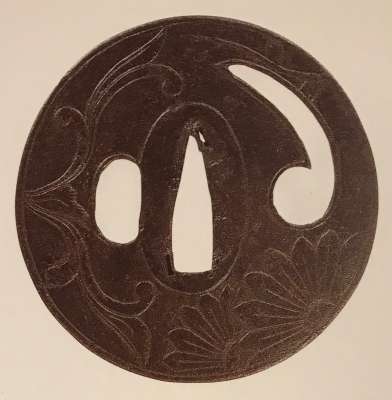
Fig. 15. Kamakura-bori tsuba of Momoyama period, end of the 16th century.
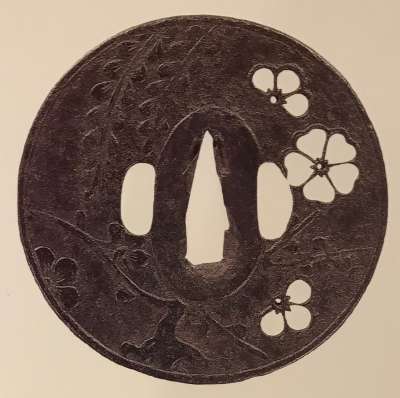
Fig. 16. Kamakura-bori tsuba of Momoyama period, beginning of the 17th century.
Fig. 15 and 16: (‘Tsuba‘ by Günter Heckmann, 1995) demonstrates two Kamakura-bori tsuba of Momoyama period. №14 is of the end of the 16th century with an inscription (signature?). “Inscription unreadable; Kamakura style. Iron, ko-sukashi, kamakura-bori. Flowers and herbs. Suki-nokoshi-mimi. Maru-gata, 7.7 x 7.8 x 0.25 cm. The “kamakura-tsuba” gets its name from the similarity to the technique of lacquering (“kamakura-bori“) which is named after the city of Kamakura. The oldest known lacquerwork in this style dates back to the end of the 14th century, the oldest tsuba in this style to the 15th century. These facts confirm that there is no connection between these styles and the Kamakura period (1185-1333). №16 is of the beginning of the 17th century. Unsigned. Iron, kage-sukashi, kamakura-bori. Plum blossoms and foliage. Suki-nokoshi-mimi. Maru-gata, 8.4 x 8.4 x 0.3 cm. The Kamakura style is supposed to have been invented by smith of the Ko-Katchushi, when decorating their works with subjects of nature. During the Momoyama period and the Edo period the Kamakura style experienced a certain revival, but the motifs became more complicated and were strongly oriented towards Chinese Art. Both hitsu-ana are definitely later additions, and this casts a negative influence on the whole”[18]. I would like to add that tsuba №14 has an openwork in a form of tomoe; halves of kiku (chrysanthemum) flowers, as well as the stems and leaves of the same plant are carved in low relief. №15 bears a cherry blossom and two halves of ume (plum) blossoms in openwork; half ume blossom, the willow branches with foliage, and an old plum tree are carved in low relief.
An example of the Edo period Kamakura-bori tsuba can be found at Robert E. Haynes Catalog #10 under №7B on page 17.

Fig. 17. Kamakura-bori tsuba of Edo period, ca. 1650.
“Later Kamakura bori-fu tsuba. The plate and the age of the iron would indicate that this is a late version of the school style, ca. 1650. Height 8.2 cm, Thickness 3 mm”[19]. I don’t know if it’s a later make or it’s just a badly treated piece. The term Kamakura bori-fu tsuba appears here for the first (and last) time. The opening on 4-5 hours is the inome – a wild boar’s eye, which shape resembles the symbol of heart in Western tradition.
4. Technique and design
We have already mentioned that a classical, exemplar Kamakura-bori tsuba is made of thin (no more than 3 mm) well-forged dark iron carved in low relief with simple, usually stylized/formalized motif (more about the motifs below). The above is mandatory, the rest is optional: there may or may not be openwork elements, and if they are it’s usually the ko-sukashi, or small openings, with raised rim (fuchidori) or without (later copies). These tsuba are usually of circular, or round form (maru-gata), but we may see also squared, mokko- and even kirikomi-mokko-shaped examples. There may or may not be a raised rim, as well as there may or may not be a soft metal fukurin. Kamakura-bori tsuba are never signed, and almost never have any sort of inlay. Low relief carving – its major technique – is sometimes called “sukidashibori (or sukidashi-bori). This term literally means “dug away carvings”. With this technique […] larger areas of surface are worked off using larger carving tools”[7]. Decoration on the face and the back of tsuba are often different, though not aways.
Having in mind what has been said in the previous paragraph, let’s look at the three unusual examples of Kamakura-bori tsuba of the Muromachi period (circa 1450) in the Collection of Dr. Walter Ames Compton auction sales at Christie’s in 1992[20]:

Fig. 18. Kamakura-bori tsuba. Muromachi period (circa 1450). Kebori (linear) carving. Dragon with brass inlaid eyes.
Fig. 18: Page 11, №2 — “A Kamakura style tsuba. Muromachi period (circa 1450). The round iron plate is carved in both broad and thin lines with a dragon design. The reverse is similarly decorated. On both sides the eyes are inlaid in brass. The rim has been raised slightly and the nakago-ana has been altered on several occasions. Height and width 8.4 cm, thickness 3 mm. Note: This type of Kamakura-bori work seems to be earlier than the relief carving style. The change in the nakago indicates that the guard was originally mounted on a tachi. Provenance: S. Aoyama, Paris”[20].
 Fig. 19. Compton Collection №3 — A Kamakura-bori tsuba. Muromachi period (circa 1450). |
 Fig. 19A. Varshavsky Collection № TSU-0348. |
Fig. 19: Page 11, №3 — “A Kamakura-bori tsuba. Muromachi period (circa 1450). The round iron plate with an openwork design of a paulownia crest, the surface details carved in low relief. The design is repeated on the reverse. The edge is slightly raised and the rim has some iron bones. Height 7.8 cm, width 7.7 cm, thickness 3.5 mm. Wooden box with inscription by Sato Kanzan, dated summer, 1973″[20].

Fig. 20. Kamakura-bori tsuba. Muromachi period (circa 1450). The rounded diamond (otofuku-mokkō) form.
Fig. 20: Page 11, №3 — “A Kamakura-bori style tsuba. Muromachi period (circa 1450). The rounded diamond-form (otofuku-mokkō) iron plate is pierced with three stylized banners (sashimono) and is carved in low relief with a design of wisteria and grass. The slightly raised rim has delicate iron bones along the edge. Much of the plate still retains its original lacquer surface but the hitsu-ana was added later. Height 9 cm, width 8.9 cm, thickness at center 4.25 mm, at edge 3 mm”[20].Taking into account the motifs presented in low relief – hanging down branches of weeping willow and raising up leaves of reed – I would suggest that the openings mean the streams of water rather than banners.
These three examples are important as they represent the tsuba, attributed to Kamakura-bori type but the one on Fig. 18 has no low relief carving, the one on Fig. 19 has large area openwork that forms positive silhouette (ji-sukashi or yō-sukashi), which technique may be classified as nikubori-ji-sukashi or sukashi-bori, and the one on Fig. 20 has an otofuku-gata shape. I want to emphasize that even in this very well edited book the three tsuba of the same type and age placed on the same page are named differently: A Kamakura style tsuba, a Kamakura-bori tsuba, and a Kamakura-bori style tsuba.
It is relatively easy to tell which tsuba belongs to the Kamakura-bori type. However, one needs to be an expert of the level of Robert E. Haynes or Sebastian Izzard to convince us that the example illustrated on Fig. 6 and on Fig. 18 are indeed the Kamakura-bori tsuba.
Some examples, like the one on Fig. 10 above and on Fig. 21 below, are ‘wrapped’ in a soft metal fukurin (rim):

Fig. 21. Tower and bridge motif. Ca. Muromachi period (15th-16th century)
Fig. 21 (Kokusai Tosogu Kai 5th, page 21, 5-J16): “Iron, maru-gata, sukidashi-bori, shakudo-fukurin. Tower and bridge motif. Circa: Muromachi period (15th-16th century). 99.4 x 99.5 mm”[21]. Besides what is listed in the book, I want to add that motif also includes a ko-sukashi butterfly, and that the ‘tower’ is a five-storey pagoda (there was not so many of them at the time); low relief carved flowers on the reverse. This design closely resembles №125 in the Lundgren Collection (Fig. 13). There is also one example of shibuichi-fukurin (rim made of shibuichi) below on Fig. 31 in ‘Japanese art and handicraft’ by Henri L. Joly and Kumasaku Tomita, 1916[21].
We have seen an example of a ji-sukashi Kamakura-bori tsuba on Fig. 19, but sometimes even a usual ko-sukashi piercing may be so excessive that most of the plate disappears:
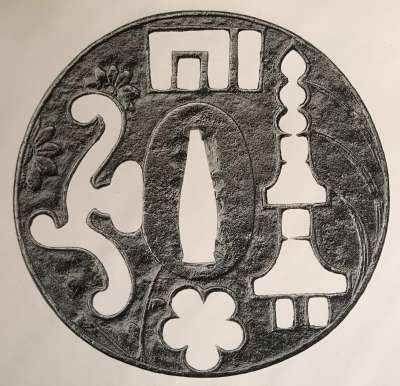 Fig. 22. Tsuba in the Collection of G.H. Naunton, Plate XI, #9. |
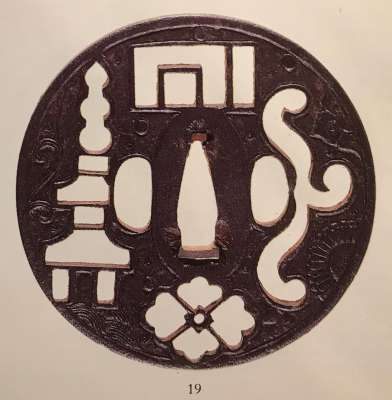 Fig. 36. Dr. Walter A. Compton Collection. Ca. 1500. |
Fig 22A. Collection of G.H. Naunton, 1912; Plate XI, №9: “Iron, decorated in openwork with a stupa, a genjimon, plum flower and conventional scroll, flowers and the edges of the perforation in low relief, Kamakura style”[5].
Fig. 36. Dr. Walter A. Compton Collection, 1992, Christie’s auction, Part II, pp. 14-15, №19: “A kamakurabori sukashi tsuba, Muromachi period, circa 1500. The circular iron plate is pierced with a design of a stone lantern, a fern frond bud, hanabishi flower and Genji chapter crests (mon) and is carved in relief with a design of chrysanthemums, waves, fern scroll, pagoda, flowers, leaves and small and large dots of dew. Height and width 8 cm, thickness 2.5 mm. In woodbox inscribed by Torigoye Kazutaro, dated Showa 38 (1963) […] The pierced design of the Genji chapter mon at the top of the plate refers to the Agemaki chapter (on the face) and the Wakana no jo chapter (on the reverse) of Murasaki Shikebu‘s famous novel The Tale of Genji. Both chapters are associated with elements in design: the block or lantern on the face, and the young herb or bracken shoot on the reverse”[34]. Piece sold at $3,080. We’ll speak about the symbols on both tsuba in the ‘Motifs’ section.
The Kamakura-bori tsuba are usually of round (maru-gata) shape. Besides the otofuku-mokkō example the above (Fig. 20), we can also see tsuba of a lobed form:

Fig. 23. Eight-lobed mokkō form tsuba. Late Muromachi period (late 16th century).
Fig. 23 (Kokusai Tosogu Kai 6th, page 19, 6-J12): “Kamakura tsuba. Iron. Ex Kawabata Collection. Circa: Late Muromachi period (late 16th century). Kawari hanagata mokkō (flower-shaped gourd form, “its form has eight sided gourds”), bordered with a shallow carved mimi with rough waves and splashes”[6]. According to Markus Sesko[7], ‘kawari-gata‘ is a generic term for an irregular shape; ‘hana’ means flower; and ‘mokkō‘ means anything of four or multiple lobed shape.
Fig. 23A and 23B demonstrate two six-lobed mokkō form Kamakura-bori tsuba from Varshavsky Collection:
…or of a square-ish form (sumi-iri-kakugata)[23]:
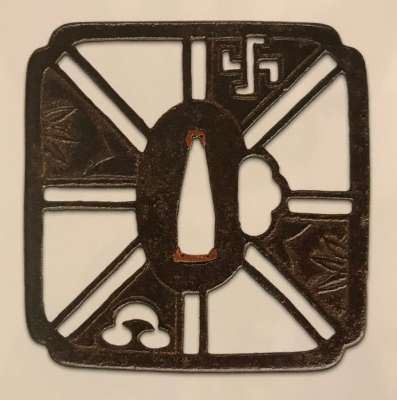
Fig. 24. Kamakura-bori tsuba of sumi-iri-kakugata form, ca. 1400.
Fig. 24 (Robert E. Haynes. Study Collection of Japanese Sword Fittings, 2010, page 12): “Buddhist mon of a temple (swastika) and suhama shape mon. Ca. 1400. This unique work is a combination of the Heianjo (Kyoto) sukashi school and that of the Kamakura bori school of the Muromachi period”[9]. [SV: Heianjo (Kyōto) sukashi is probably what’s usually called ‘Kyō sukashi‘ or ‘Kyō-sukashi‘. “Suhama”, according to Markus Sesko[7], is a shape of a shore of the delta on the Holy Island of the Immortals called Hōrai].
…or of a simple mokkō form:

Fig. 25.
Fig. 25 (Robert E. Haynes. Study Collection of Japanese Sword Fittings, 2010, page 14): “Iron mokkō form plate carved in low relief with a design of temple landscape and half kiku bloom. The reverse carved with an overall landscape, with pagoda, torii (Shinto shrine gates), and farm houses. Akiyama Kyusaku (1843-1936) did not like this type of tsuba at all, and thought them crude and the iron of very poor quality. They are inakamono, country work, and were no doubt worn by low level samurai, but today the charm of their designs seems to give them a quality that only time can assign. This example dates from about 1450, an early work of this type”[9].
…or of a very deep mokkō form:
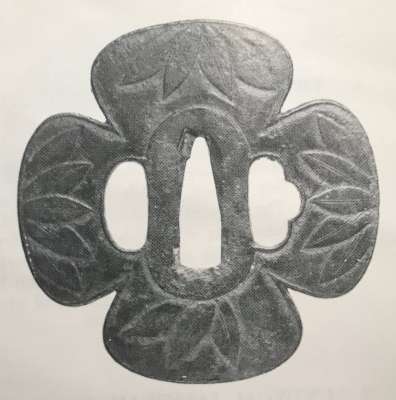
Fig. 26. Kamakura-bori tsuba of the deep mokkō form, ca. 1450
Fig. 26 (Christie, Manson & Woods auction sales “Kotetsu”, 1980, page 12, №11): “Good classic Kamakura-bori tsuba of the middle period, ca. 1450. Iron plate of very deep mokkō shape, almost cruciform of four large lobes. Slightly raised rim cut from the plate and good small iron bones in the edge. Each lobe with a group of three, four, or five bamboo leaves radiating from a common center and with the central vein carved in kebori. This design used on the reverse but the leaves overlap from one end rather than center. There are sixteen leaves on the back but seventeen on the face. Original hitsu-ana with slightly raised edge. Height, 7.7 cm., thickness, 3 mm. Note: this design is most probably a family mon, the name now being lost”[24]. “Middle period” probably refers to the middle Muromachi period.
…or the kirikomi-mokkō (open inome indentations) form:

Fig. 27A. Kamakura-bori tsuba of kirikomi-mokkō form. Late Muromachi/Momoyama Period. (Face, omote).

Fig. 27B. Kamakura-bori tsuba of kirikomi-mokkō form. Late Muromachi/Momoyama Period. (Reverse, ura).
Fig. 27A-B (The Henry D. Rosin Collection, 1993, page 30, # 14). Kamakura-bori. A large circular iron tsuba pierced with four inome, carved in low relief with plum, orchid, water and cloud design. Late Muromachi/Momoyama Period. Size: 94 x 93 x 2.5 mm. Illustrated: Torigoe, Tsuba Kanshoki, plate 32″[25]. On the omote side we see the clouds on tom and the seigaiha waves in the bottom, a bunch of orchid leaves on the left hand side lobe, and the plum blossom and branches with buds on the right hand lobe. On the reverse we see the orchid leaves hanging from the above, old plum tree, and plum blossoms and branches with buds, and the reed leaves. The central part of tsuba around nakago-ana on both sides is decorated with karakusa – vine tendrils with leaves – forming an aoi-shape pattern, which alludes to the old-time tsuba of the Heian period (e.g. of Emperor Goshirakawa‘s sword)[33].

Fig. 28. Kamakuri-bori tsuba. Collection of G.H. Naunton. Plate V, №10.
Fig. 28 (Tsuba in the Collection of G.H. Naunton, 1912; Plate V, № 10): The piece lacks explicit attribution to Kamakura-bori tsuba. All it says is: “Iron, small tachi aoi with very low relief chasing. 17th century (?)”[5].
We see here that the Kamakura-bori tsuba come in many forms. Sometimes is very hard to tell why an expert attributes it to the type. I would like to illustrate such unusual (at least to me) examples by presenting two more specimens:

Fig. 29. A Kamakura-bori tsuba of octagonal form, Momoyama period (1573-1615)
Fig. 29. (Sotheby’s auction of Professor A. Z. Freeman and the Phyllis Sharpe Memorial collections under №37 on pp. 18-19): A Kamakura-bori tsuba, Momoyama period (1573-1615), of octagonal form with a slightly raised rim and slightly raised seppa-dai, the hammered ground with granular tekkotsu and pierced with two large formalised butterflies with raised outlines. 7.6 cm, thickness at centre c.3.5 mm.
Finally, there are a couple of tsuba with purely linear motif:
 Fig. 30. Robert E. Haynes, Catalog #9. Muromachi, ca. 1550. |
 Fig. 37. Dr. Walter A. Compton Collection. Muromachi, ca. 1400 |
 Fig. 37A. Varshavsky Collection № 0341. |
Fig. 30: Attributed by Robert E. Haynes to Kamakura-bori type, and illustrated in his Catalog #9 on page 24-25 under №23, “Typical later Kamakura-bori style work. This type of plate and carving show the uniform work produced by several schools in the Muromachi period. Some had brass inlay and others were just carved as this one is. The hitsu are later. Ca. 1550. Ht. 8.8 cm, Th. 3.25 mm”[15].
Fig. 37: Dr. Walter A. Compton Collection, 1992, Christie’s auction, Part II, pp. 14-15, №16: “A kamakurabori type tsuba, Muromachi period, circa 1400. The thin, six-lobed iron plate is carved on each side with a wide groove that follows the shape of the rim, and with six scroll lines and a single thin circular groove. […] The hitsu-ana was added at a later date, circa 1500-1550. Height 8.3 cm, width 8.6 cm, thickness 2.5 mm. The tsuba was initially intended to be mounted on a tachi of the battle type…”[34].
Later this type of tsuba may have acquired some brass inlay, though Sotheby’s attributed the plate to Tosho School[36]:
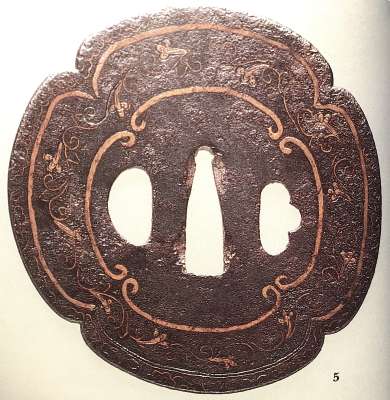
Fig. 37B. An early Tosho tsuba with added decoration. Mid to late Muromachi period, 15th/16th century.
Another unusual Kamakura-bori linear carving upon openwork design[36]:
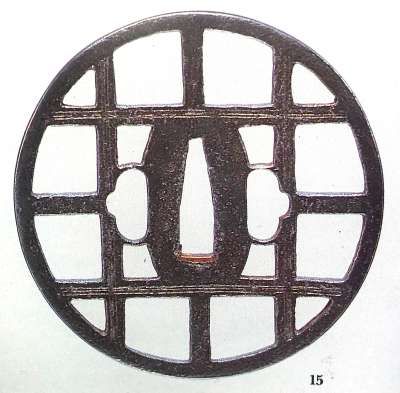
Fig. 37C. Caldwell Collection/Sotheby’s 1994 № 15. Kamakura-bori tsuba. Nambokucho period, late 14th century. 85 mm.
Update of April 9, 2018: Now I got a similar tsuba, almost the same, with very few differences. Try to find three. I only found two. Look:
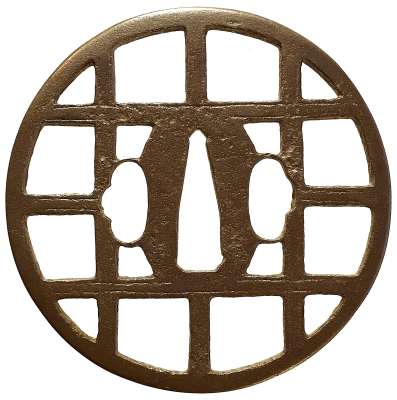
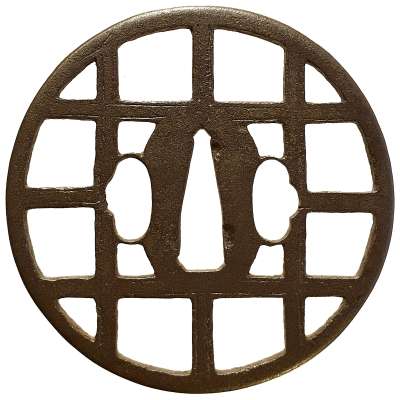
One: My tsuba does not have the sekigane.
Two: My tsuba is signed, and now I can declare that this is a Shoami piece, NOT a Kamakura-bori tsuba.
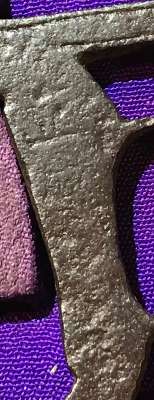
The list of techniques (in alphabetical order) mentioned in connection with the Kamakura-bori tsuba:
Fuchidori-sukashi: This term is used to describe ko-sukashi elements on Kamakura– and Ōnin-tsuba whose edges show a border of raised niku (fuchidoru). This “trimming is insofar important as to judge if the sukashi elements are ubu, i.e. original to the piece, because later opened sukashi on Kamakura– and Ōnin-tsuba does not have this niku border running around the edges[23].
Ji-sukashi: Describes openings which affect large areas of the ground plate. Also called “yo-sukashi” (positive, yo), because the remaining motif itself represents a positive silhouette[23].
Kage-sukashi: The term means literally “Shadow sukashi” (“kage” means shadow) and refers to an openwork design where the elements form a negative silhouette. Some call it also in-sukashi or in no sukashi which means literally “negative sukashi“. The small decorations seen on old Ko-Tōshō or Ko-Katchushi-tsuba, for example, are interpreted in negative kage-sukashi or in-sukashi[7].
Kebori: Literally “hair carvings”, is the basic carving technique, and in this sense, kebori and katakiribori were once called motobori (lit. “basic/elementary carvings”). With kebori, the motif is carved into the plate in a liner manner, and these thin carving lines resemble hair (ke)[23].
Ko-sukashi or ki-sukashi: Small sukashi. Today only the term “ko-sukashi” is used for smaller sukashi elements. Ki-sukashi basically describes several ko-sukashi which occupy the entire or large area of the surface[23].
Sukidashi-bori or sukidashibori: This term literally means “dug away carvings”. With this technique […] larger areas of surface are worked off using larger carving tools”[7].
Zōgan: Inlay[23]. Though this technique was almost never used in Kamakura-bori tsuba, we have here two specimens that were made with the use of this technique, both with the dragon motif.
Motifs.
As we have seen from many examples illustrated here, the motifs of Kamakura-bori tsuba are rather standard. Let’s simply list everything we have seen, starting with the ko-sukashi (small openwork, piercing) elements. Dragonfly, banners, inome (wild boar’s eye), cherry and plum blossoms (whole of halves), tomoe, mushrooms, The Myriad Treasures items such as scrolls and cloves, and the gourds.
One specimen with the gourd was illustrated on Fig. 13. Another one is here:
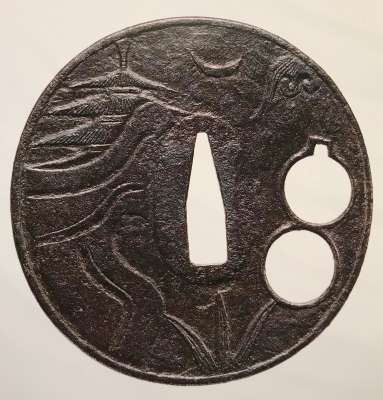
Fig. 31. Kamakura-bori tsuba with a double gourd in openwork. Circa: Late Muromachi period (16th century).
Fig. 31 (Kokusai Tosogu Kai, 5th, page 37, №5-C2): “John Berta Collection. Kamakura tsuba. Iron plate. Maru gata with no kogai or kozuka hitsu. Circa: Late Muromachi period (16th century). H 83 mm, W 83 mm, Thickness at seppa-dai 3 mm, at the mimi 2 mm. The reach iron plate is decorated with sukashi mon and a carving of a river by a pagoda, flower and leaves. This uchigatana tsuba has a raised surface on the plate with carving done in relief and taper to a rolled square mimi. The reverse repeats the design under a waning moon”[21].
Butterfly is also a usual motif of the openwork:

Fig. 32. Kamakura-bori tsuba with a butterfly in openwork, 16th century.
Fig. 32 (Iron tsuba. The Japanese Sword Museum, 2014, page 19, №10): “Kachō-zu tsuba (flowers and butterfly). Kamakura, 16th century. This is a truly refined work for a Kamakura tsuba. We see butterflies on cherry and plum blossoms, and the interpretation of the grass stalks has the typical from of Kamakura works. Both the iron and condition are decent”[27].
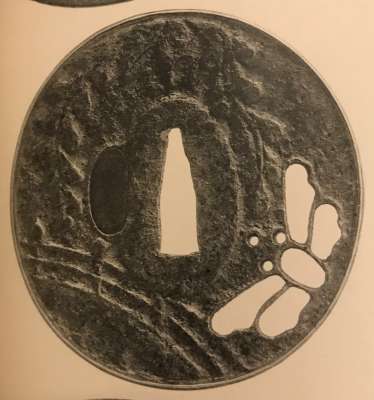
Fig. 33. Kamakura-bori tsuba with a butterfly in openwork. 17th Century.
Fig. 33 (‘Japanese art and handicraft’ by Henri L. Joly and Kumasaku Tomita, 1916, Plate CII, №22): “Iron, so-called Kamakura Tsuba, decorated with a bridge and a wisteria in low relief, repeated on both sides, and with a butterfly in openwork, 17th Century; Shibuichi rim”. Here we also find a description of Kamakura tsuba origins: “At the time of the wars of Ōnin a style of openwork tsuba with designs in relief and conventional perforations appeared; which has received the name of Kamakura tsuba (not to be confused with tsuba of the Kamakura period), the metal is always very black”[22].
The low relief carvings, as we can see, include waves, hills, grasses, leaves, clouds, tea houses, farm houses, pagodas, Shinto shrine gates (torii), bridges, streams, flowers (cherry and plum blossoms and the bellflower). Sometimes, but not often, it’s a dragon:
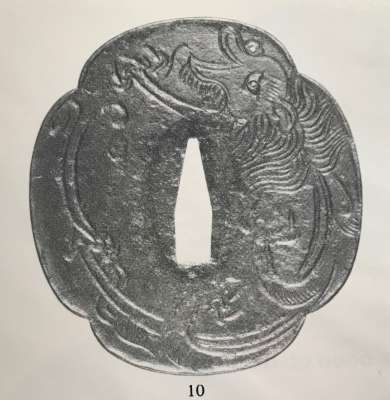 Fig. 34A. Kamakura-bori work with a design of a dragon with the eyes inlaid in brass. Ca. 1400. |
 Fig. 34B. A Katchushi tsuba with a mythical beast, its eyes of brass zōgan. 1550-1600. |
Fig. 34A (Christie, Manson & Woods auction sales “Kotetsu”, 1980, page 12, №10): “Large rare Kamakura-bori tsuba of unusual design, ca. 1400. Iron oblong mokkō shape with very well hammered raised rim showing good small iron bones. The plate well hammered and turned with a very bold design of a dragon ascending the right side and his tail wrapped up the left side. The body and legs in broad strokes, the hair and head in very well carved thinner lines, the eyes inlaid in brass. This design is repeated on the back side. Height, 8.9 cm., thickness at center, 2 mm., at edge, 3 mm. Note: this is the only known example of Kamakura-bori work with this style of design. It is also fortunate that hitsu-ana were never cut”[24]. I would like to remind the reader that the other Kamakura-bori work with a design of a dragon with the eyes inlaid in brass has been illustrated above on Fig. 18., from the Collection of Dr. Walter Ames Compton. On Fig. 34B: for comparison, I put another tsuba from Professor A. Z. Freeman and the Phyllis Sharpe Memorial collections №36, pp. 18-19; its description seems very similar to the one on Fig. 34A, though it is attributed to a different school: “An unusual Katchushi tsuba, late Muromachi/Momoyama period (2nd half of 16th century), of circular form with slightly raised rim, the thin plate engraved on either side with a mythical beast, its eyes of brass zōgan. 8.8 cm”[13].
Another dragon motif is illustrated on Fig. 35 below (Robert E. Haynes’ Catalog #4, pages 24-25, №1061): “Interesting Kamakura bori style example. Though this would seems to be typical Kamakura-bori style, the iron is softer and not as deep a color as the usual works in this school. The dragon repeats on the reverse. Some slight iron bones in the edge. This might be Kyushu work of the Nagasaki area. It has that feeling, but it would be before they used much nunome inlay. More study should be done on this tsuba. Ht. 8.1 cm., Th. 2 mm”[12]. Nothing is said about its age.

Fig. 35. Robert E. Haynes’ Catalog #4. No age attribution.
A few more designs from Dr. Walter A. Compton Collection with the most frequent motifs:
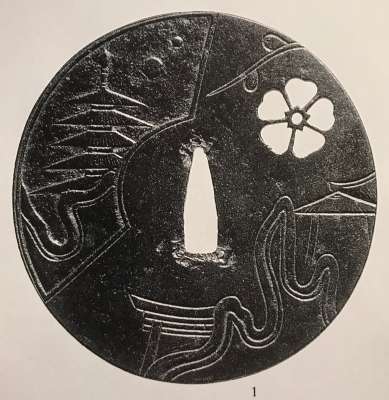 Fig. 38. Compton Collection. Muromachi, ca. 1400. |
 Fig. 39. Compton Collection. Muromachi, ca. 1400. |
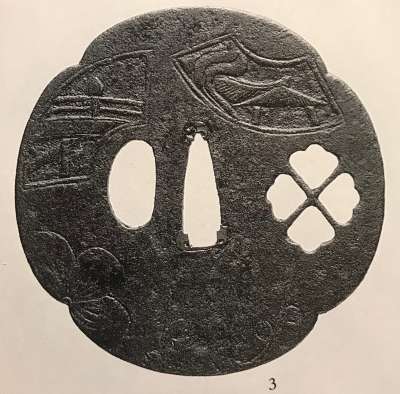 Fig. 40. Compton Collection. Muromachi, ca. 1450. |
Fig. 38: Dr. Walter A. Compton Collection, Part III, pp. 10-11, #1. “A kamakura-bori style tsuba, Muromachi period, ca. 1400. The thin iron plate is carved with a design of a five-level pagoda, mountains , torii, house and plum branch, on the face and on the reverse. A large openwork cherry bloom is pierced in the upper right quadrant. Height 9.3 cm, width 9.1 cm, thickness 2.5 mm. Double wood storage box with attestation by Sato Kanzan, dated autumn, 1974″[35]. Sold at $6,050.
Fig. 39: Dr. Walter A. Compton Collection, Part III, pp. 10-11, #2. “A kamakura-bori style tsuba, muromachi period, ca. 1400. The thin round iron plate is carved on the face with a design of plum flowers, bracken and leaves. The reverse is carved with chrysanthemum, fern and leaves. The edge has small delicate raised rim. Two overlapping cherry blooms are pierced in the upper right area, and each has a slightly raised rim. Height and width 8.7 cm, thickness 3.0 mm. Provenance S. Aoyama, Paris”[35]. Sold at $440.
 Fig. 22. Tsuba in the Collection of G.H. Naunton, Plate XI, #9. |
 Fig. 36. Dr. Walter A. Compton Collection. Ca. 1500. |
Fig. 40: Dr. Walter A. Compton Collection, Part III, pp. 10-11, #3. “A kamakura-bori style tsuba, muromachi period, ca. 1450. The thin four-lobed iron plate is carved on the face with two fans, a half plum flower and a cherry tree branch. The reverse is carved with two fans and a clove plant. The center right side of the plate is pierced with a four-petal bloom, a family crest (mon). Height and width 8.5 cm, thickness 3.0 mm. Provenance S. Aoyama, Paris”[35]. Sold at $495.
What is interesting is that the fan design is not mentioned on Fig. 38, and on Fig. 40 nothing is said about the motifs inside the fan plates. The four-petal bloom on Fig. 40, which is characterized as a family crest, however it’s shape (hanabishi) is not specified. We see here that the way of presenting the elements of motif, such as five-level pagoda, mountains, torii, fans, houses, plum and cherry blossoms is pretty much the same across all tsuba presented in this overview.
For the ease of perception of the motifs, I put all tsuba in one place.
 Fig. 1. Muromachi, 1393-1573. |
 Fig. 2. Early Muromachi, ca. 1400. |
 Fig. 3A. Early Muromachi, 1400-1450. |
 Fig. 3B. Early Muromachi, 1400-1450. |
 Fig. 5. Muromachi, 1500-1573. |
 Fig. 6. Kamakura, ca. 1300. |
 Fig. 7. Early Muromachi, ca. 1350. |
 Fig. 8. Late Muromachi, 1514-1573. |
 Fig. 9. Early Muromachi, 1393-1453. |
 Fig. 10. Mid-Muromachi, ca. 1450. |
 Fig. 11A, Muromachi, ca. 1425. |
 Fig. 11B, Muromachi, ca. 1500. |
 Fig. 12. Mid-Muromachi, 1454-1513. |
 Fig. 13. Muromachi, 1500-1573. |
 Fig. 14. Momoyama, 1574-1599. |
 Fig. 15. Momoyama, 1574-1599. |
 Fig. 16. Momoyama, 1600-1615. |
 Fig. 17. Early Edo, ca. 1650. |
 Fig. 18. Early Muromachi, ca. 1450. |
 Fig. 19. Early Muromachi, 1450. |
 Fig. 20. Early Muromachi, ca. 1450. |
 Fig. 21. Mid/Late Muromachi, 1500-1573. |
 Fig. 22. Age unspecified. |
 Fig. 23. Late Muromachi period, 1514-1573. |
 Fig. 24. Early Muromachi, ca. 1400. |
 Fig. 25. Early Muromachi, ca. 1450. |
 Fig. 26. Early Muromachi, 1450. |
 Fig. 27A. Late Muromachi-Momoyama, 1514-1615. |
 Fig. 27B. Late Muromachi-Momoyama, 1514-1615. |
 Fig. 28. Momoyama-Edo, 17th century. |
 Fig. 29.Momoyama period, 1574-1615. |
 Fig. 30: Muromachi, ca. 1550. |
 Fig. 31. Late Muromachi, 16th century. |
 Fig. 32. Muromachi-Momoyama, 16th century. |
 Fig. 33. Momoyama/Edo, 17th Century. |
 Fig. 34A. Early Muromachi, ca. 1400. |
 Fig. 35. Age unspecified. |
 Fig. 36. Muromachi, ca. 1500. |
 Fig. 37. Muromachi, ca. 1400. |
 Fig. 38. Muromachi, ca. 1400. |
 Fig. 39. Muromachi, ca. 1400 |
 Fig. 40. Muromachi, ca. 1450. |
The list of motifs in alphabetical order:
Bamboo (take), see Fig. 3A, 3B, 17, 24, 26. “In artistic vocabulary, the bamboo, pine, and plum are known as the Three Friend of Winter, while the bamboo, plum, orchid, and chrysanthemum enjoy the designation of the Four Gentlemen”[16]. Besides on tsuba depicted at Fig. 26, bamboo does not play an important role among the motifs represented here.
Banners (sashimono), see Fig. 20. This is the interpretation given by Sebastian Izzard and Yoshinori Munemura for Christie’s auction of Dr. Walter Ames Compton Collection in March, 1992[20]. However I revere these two gentlemen and bend before their authority, I am humbly guessing that the design signifies the flowing streams of water.
Bellflower (kikyo), also known as Chinese balloonflower. It is one of the Seven Grasses of Autumn (see carving at Fig. 3A and 3B).
Bracken (warabi), see Fig. 22 and Fig. 36. “The braken, a long-lived fern, has lent its name to a curved line with a tightly curled-head design – the fiddlehead warabidemon“[16]. “A small number of families adopted the motif as a family crest”[26]. To traces of what this design signifies besides being aesthetically pleasant have been found so far.
Bridge. Bridge is a popular pictorial landscape design, and if we look at the Kamakura-bori tsuba low relief carving as at the equivalent of miniature painting, we see a number of specimens with landscape motifs that include bridges, rivers, rocks, pagodas, houses, and bridges (Fig. 3B, 7, 8, 13, 14, 21, 25). “Apart from their appearances in landscape scenes, bridges in Japanese art allude to specific episodes of history and legend. The most prominent examples of this involve: – The Gojo Bridge in Kyoto, where the warrior-monk Benkei and Minamoto Yoshitsune, according to legend, fought each other,The bridge and the episode that it represents are often depicted in an abbreviated form as cupola-topped vertical elements and horizontal beams”. That’s what we see on all the tsuba represented here. The other example is “The plank bridges at Yatsuhashi, a site east of Kyoto. This motif has three elements: the serpentine water of a stream or march; irises of the kakitsubata variety; and a series of connected, flat bridges”. We do not have the Yatsuhashi bridge here. This motif constitutes a common design of Kyo-sukashi tsuba.
Buddhist monument (gorintoh) or pagoda, see Fig. 22 and 36 (openwork), and Fig. 3A, 7, 8, 13, 21, 25, 31, 38 (carving). Sasano Masayuki provides illustrations of three old sukashi tsuba with this motif, №№34, 48, and 50. His interpretation of the symbol is: “mortality and beauty”; “meditation or ceremony”, and “The pagoda is a Buddhist structure erected at grave sites or to house the remains of the dead. […] Regardless of interpretation, it illustrates the futility of war”[29]. “In Japan, pagodas were first erected in the sixth century, when Buddhism was introduced via China, and they have been used from then to the present to store sutras and sacred relics and to observe mass. […] In Japanese iconography, the pagoda is an attribute of Bishamonten [Vaishravana], one of the Guardian Deities of the Four Directions. […] Guardian Deities of the Four Directions (shitenno) are a Buddhist grouping that is also called the Four Kings of Heaven and Four Guardian Kings”[16].
Butterfly (cho), see Fig. 21, Fig. 29., Fig. 32., and Fig. 33. According to Sasano Masayuki №№ 9, 21 and 24, “the older butterflies are portrayed abstractly while more recent attempt realism. Butterflies represent freedom or a prayer for piece”[29]. The two butterflies depicted on Fig. 29 are the most abstract , the two on tsuba on Fig. 32 and Fig. 33 are the most naturalistic, though all of these items were attributed to the same period of Momoyama. Marrily Baird calls the butterfly chocho: they are the souls of the living and the dead as well as the symbols of joy and longevity[16].”To a large extent, this [butterfly] symbolized the other side of the warrior’s harsh life – his susceptibility to the effete graces of the courtly society. The Okochi family used the flying butterfly (fusencho) as a crest to commemorate their native place, Fusencho in Mikawa (present Achi Prefecture). Among designs based on living creatures, the butterfly motif enjoyed by far the greatest popularity”[26].
Cherry blossom (sakura), see Fig. 11B, 38 and 39. It’s hard to tell, as the motif is so widely spread in Japanese culture, starting in the 10th century and until today. Both Marrily Baird and John W. Dower suggest that “appreciation of cherry blossom coincided with a larger cultural transition away from the standards of Chinese tradition toward more indigenous values and images. […] Despite the widespread popularity of the cherry blossom, its adoption as a family crest was unremarcable. Few warriors appear to have used this motif…”[26]. “The cherry blossom is used infrequently as a family crest, probably because the flower is a symbol of ephemerality”[16].
Clouds (kumo). See Fig. 5, 10, 11B, 12, 27, 31. Clouds “rarely convey a sense of weather or athmosphere and most often appear in stylized forms as: (1) Symbols with religious meaning in Buddhist and Taoist traditions; (2) Signs of divine authority; (3) Contextual background, etc.”[16]. However, I believe that in landscape motifs those clouds may just be the clouds, as in any landscape. The clouds on tsuba are not drawn in Chinese tradition. They look like a curl or scroll with a tail-like (hairy tortoise tale) element handing down, possibly representing the rain. “The cloud pattern appears to have been brought to Japan in connection with Buddhist teachings, symbolyzing the realm beyond or the spirits of the dead. As a crest it maintained these religious connotations…”[26].
Clove (choji), see Fig. 11A. According to Sasano Masayuki №18, clove is a symbol of good fortune; it is part of Seven Sacred Treasures[29]. According to Merrily Baird, “… The highly prized spice appears in Japanese art in family crest designs as well as in depictions of the Myriad Treasures (takaramono)”[16]. Clove also “became identified as one of the takarazukushi, a group of figures said to symbolize health, comfort, luxury, and the like [this is, basically, Seven Sacred Treasures]. Several families used the motif as a family crest”[26].
Crossbars, parallel (futatsu-hikiryo), see Fig. 12. Interpretation of these openings requires more study, as the issue is still covered with a thick blanket of fog. According to Sotheby’s, they stand for “raising mist bands” or “double vertical bands of rising mist”[13]. They may well be the sutra scrolls (R.E.Haynes, Study Collection, p. 56)[19], or simply the parallel crossbars (futatsu-hikiryo)[29].
Chrysanthemum (kiku), see Fig. 11B, 15, 22, 25, “The first use of the chrysanthemum as a symbol of the Japanese imperial family occurred in the thirteenth century. Later many commoners also used the flower as a family crest, and Matsuya store catalogue of 1913 included ninety-five crest designs based on the chrysanthemum. […] One or several half-chrysanthemum blossoms sitting atop of serpentine lines of flowing water… is emblematic of the warrior Kusunoki Masashige[16].” In general, the flower symbolizes longevity and eternal youth. Being accompanied with by the bamboo, plum, and orchid, chrysanthemum forms a grouping called Four Gentlemen that is “regarded as the symbol of the four seasons as well as of the virtues of the ideal gentleman”[16]. Chrysanthemum is also one of the Seven Grasses of Autumn.
Dragon (ryu), see Fig. 18, 34, and 35. In Asian art and religious tradition dragon is too a broad topic. “The dragon is one of the most ancient of all images in China, and it traditionally associated with the unicorn, phoenix, and tortoise as one of the four auspicious creatures. Both its imperial and Buddhist associations were transferred to Japan, and it was particularly associated with Zen”[26].
Dragonfly (tombo), see Fig. 5. The Japanese word for dragonfly is katchimushi (champion insect) or kachigunmushi (champion warrior insect). According to Sasano Masayuki, №№ 31 and 39: dragonfly is descending aggressively on its prey, displays a bold expression of military might, bravery, and aggression[29]. Merrily Baird provides a slightly different account, though within the same range of meanings: ” The dragonfly (tombo) is emplematic of martial success, as various names for the insect are homophones for words meaning “victory”. The dragonfly is also auspicious because references in the Kojiki and Nihongi link it in both name and shape to the old kingdom of Yamato. It also appears in conjunction with such imperial motifs as the chrysanthemum. […] The dragonfly is a seasonal symbol of the late summer and early autumn”[16].
Fan (folding fan, ogi or sensu), see Fig 11B, 17, 38 and 40. For fan is an auspicious object, it is a frequent motif on tsuba in general and on the Kamakura-bori tsuba in particular, though on the latter the fan usually rendered as a background for the other motifs (clouds, grasses, leaves, chrysanthemum, etc.). Folding fan was a Japanese invention, and the major export item from Japan to China in the 12th century.
Gourd (hyotan, hisago), see Fig. 13. and Fig. 31. John W. Dower states that “Gourd (hyotan) has never been adopted as a family crest”[21]. According to Merrily Baird, “gourd usually associates with a group of Chinese sennins: Chinnan, Chokaro, or Koko. In the very last years of the Muromachi period and the years to come, in Momoyama and even in Edo periods, gourd also often alludes to Toyotomi Hideyoshi and his ‘Thousand Gourds’ standard. The sennin or rishi are the immortals, fairies, and wizards of the Taoist tradition that evolved in ancient China. The shape of the double gourd was said to represent heaven and earth, and the fruit itself was thought to symbolize rebirth and immortality. A more esoteric link between the gourd and the Taoist belief, that magical forces grow and gather strength in tightly contained vessels”[16].
Hanabishi (see Fig. 36 and Fig. 40). There are several English translations of this term: flower diamond, flower lozenge, or flowery lozenge[29]. Another name of the same symbol in Japanese is karahana[16] or karabana[26] (Chinese flower) and subsequently karahanabishi/karabanabishi. The karahana (literally: Chinese flower) is a generic floral design that in its simplest form has four or five petals. More often than not it is enclosed in background designs of diamonds, tortoiseshell hexagons, or vertical settings. In more complex forms, the petals may be layered, but the motif is immediately recognizable because of its highly stylized and symmetrical presentation”[16].
Heavenly bodies, see Fig. 23. Four round openings, possibly sun, moon, and stars, or just moon and stars, or just stars. According to Isao Honda, almost any combination of almost any number of circles from two to nine constitutes the ‘moon and star symbol’ (tsuki-to-hoshi). “These crests with moon and star designs are believed to have been derived from primitive religions. European designs of stars usually have projecting rays. However, in Japanese designs they are shown as simple circles. It is interesting to note that there is no traditional Japanese star crest which has projecting rays”[30].
Incense symbol or Genji-mon (Genji ko-zu [Dower][26], konozu [Isao Honda][30], Genjoko-zu [Baird][16], see Fig. 22 and Fig. 36. “The Genji incense symbols were originally associated with one particular type of incense ceremony, in which five different primary scents were used, each being divided into five packets. Each of the resulting twenty five packets was differently marked with a symbol… Various combinations selected from among the packets were then mixed and burned. In time the number of symbols was expanded to fifty-four, corresponding to the number of chapters in The Tale of Genji. Each was associated with a specific chapter…”[26]. Gengi-mon alludes to the tradition of incense ceremony -> to Heian period aristocracy -> courtly society, etc.
Inome (see Fig. 17). A heart-shaped piercing, or, better, an image that has a form of what in Western tradition is called “heart-shaped”. We are not going to any detail regarding why in Europe this symbol signifies the human heart, neither to contemplate about are the roots of such a symbol. Since the beginning of 20th century there were two interpretations of this Japanese design in Western literature on Japanese sword guards: one – it’s a Hollyhock leaf (aoi) [tsuba №89 on Plate II and p .8, Naunton Collection, 1912][5], and two – it’s a wild boar’s eye (inome) [shapes №6-8, pp. 98-99, Joly & Tomita, 1916][22]. Today’s Markus Sesko’s laconic definition is: “Heart-shaped pattern which is said to go back to the shape of a wild boar’s eye”[26].
Karakusa, see Fig. 27 “The term ‘karakusa‘ is written with two ideographs. The first, kara, literally means the T’ang dynasty but is commonly used in Japan to refer to elements of culture adopted from China in the early centuries of the two countries’ intercourse. The second, kusa, means grasses or plants. Most often the Japanese apply the word karakusa to the scrolling plant designs called arabesques. What is most striking about many karakusa designs is a lack of botanical authenticity…”[16]. However, Saburō Mizoguchi managed to identify particular types of plants in many karakusa designs: “honeysuckle, peony, and hōsōge [literally: the flowers of precious appearance; design brought via Silk Road from Persia and Central Asia, but it is not lear whether the motif was based originally on a specific flower or was always imaginary, more lavish cousin of karahana][16] versions continued to be widely used, but other common flowers also began to wind their way into karakusa motifs of Muromachi-period designs. These new flowers included plum, paulownia, wisteria, and chrysanthemum”[32]. While it is technically relatively easy to apply a karakusa motif in inlays (e.g. with brass inlay in Ōnin and Heianjō tsuba) and positive silhouette openwork (ji-sukashi, e.g. Kyo-tsuba or Akasaka or Owari schools), carving the arabesques in low relief is hard. The only example we have here is tsuba on Fig. 27A and B, where karakusa is rendered in kage-zōgan and not in sukidashibori.
Mist (kasumi), see Fig. 3A and 28. “The stylized rendering of mist is a familiar convention in Japanese scroll paintings and was belatedly adopted as a crest by certain actors’ families”[26]. Raising mist bands motif is called nibiki.
Mushrooms (matsutake or just take), see Fig. 10. According to Sasano Masayuki №№ 6 and 8, its rapid growth and lack of roots is probably symbolic[29]. Merrily Baird, however, says that the main use of a mushroom in design “reflects more their sexual symbolism than either their dietary appeal or interesting shapes. Mushrooms in Japan are generally a symbol of fertility, with some flat variety, like shiitake, being associated with females. In contrast, the matsutake mushroom [and it seems that this is the mushroom usually pierced on tsuba] (Armillaria edodes) is a phallic symbol, as befits its thick, spearlike stem and the fact that it is consumed before the cup opens”[16].
Orchid (ran), see Fig. 1, 11A, 27 and 32. “…teamed with plum, pine, and bamboo, it is known as one of the Four Friends and, when linked to the plum, bamboo, and chrysanthemum, as one of the Four Gentlemen”[16].
Palm (sotetsu or shuro). “The sago palm or cycad (on Fig. 1, at 3-4 o’clock), in contrast to the hemp palm, is usually rendered realistically. Although it generally lacks symbolic significance for the Japanese, the fact that the second ideograph of its two-element name (sotetsu) means ‘iron’ has led to its occasional artistic use as a reference for a year governed by the metal element” [Merrily Baird][16]. The hemp palm – (trachycarpus or shuro in Japanese) has lent itself to stylized family crest presentations that resemble the form of a fan. For the ancient Chinese, fans made of palm leaves were a symbol of the leisured life associated with retired scholars. This tradition may account for the fondness with which Heian aristocrats regarded the palm fan”[Merrily Baird][16]. “The Chinese think very highly of a retired life, free from the turmoil of this world… A fan made out of a palm leaf is generally carried by retired scholars and by alchemists” [C. A. S. Williams. p. 313][28].
Paulownia (kiri), see Fig. 19. Paulownia, is the third most frequent motif in the Japanese art (after the cherry blossom and the plum blossom) and the first in heraldry. “Along with chrysanthemim, the paulownia has been a symbol of the imperial family since Heian days”[16]. “…paulownia bears a heavy load of legendary and historic significance. […] As an explicitly imperial crest, the paulownia ranks only slightly behind the chrysanthemum, and both are usually taken as the dual emblems of the Japanese throne. […] …emperor Godaigo (1288-1339) conferred both the chrysanthemum and paulownia crests upon Ashikaga Takauji (1305-1358), founder of the Ashikaga line of shoguns… […] A number of powerful daimyō who gave their support to the Ashikaga were rewarded with the right to wear the prestigious paulownia, and from this time on the paulownia crests conveyed a heady aura of both legitimacy and power. In the late sixteenth century the brilliant and maverick Toyotomi Hideyoshi clamped his control over the land and was granted use of the paulownia by the throne itself”[26].
Pine. “The pine tree (matsu), a symbol of longevity [and even immortality], good fortune, and steadfastness”. On tsuba at Fig. 3A and 3B we see the pine together with the bamboo leaves and plum blossom. “Designs that combine the pine, bamboo, and plum are also popular, constituting what is known as the Three Friends in Winter theme of art”. On the same tsuba we see the orchid, and that means that here we have the Four Friends, a Chinese-inspired artistic grouping (Three Friends plus the orchid).
Plum blossom (ume). Tsuba on Fig. 16 has a cherry blossom and two halved plum blossoms. According to Sasano Masayuki’s № 47, the full blossom with all its petals intact is delicate yet strong and the blossom with petals missing suggests a change without misfortune[29]. There is as much written about the symbol of plum blossom as it is written about the cherry blossom. What seems important in our particular case, however, is that the plum blossom is a symbol of Chinese influence and tradition, and in this way it constitutes an opposition to the cherry blossom. The cherry blossom on tsuba is complete, and the two plum blossoms are halved, damaged, cut… The cherry blossom stays, the plum blossoms are almost not there. May this be interpreted as the victory of the new Japanese tradition over the old Chinese tradition? However elegant this interpretation seems, I doubt. After all I have read about the plum blossoms, I suddenly realized that in reality it is an apricot blossom: “References to the ume, a term that is commonly translated into English as ‘plum’ but in fact refers to an apricot, occur in Japanese documents as early as the eighth century”[16]. We see another plum blossom pierced in tsuba on Fig. 22. See also Fig. 3A, 5, 13, 14, 16, 27, 31, 32 for plum blossom rendered in low relief carving.
Reeds (ashi), see Fig. 1, 10, 11A, 12, 14, 20, 22, 23, 27, 28, and possibly 31. “Japan is the land of reedy plains”[26]. “Japan has a long coastline which marked by many dunes and beach ridges. Behind these dunes and ridges evolved marshes, tidal pools, and lagoons that provided a habitat for reeds. […] In the feudal period, reeds themselves gained greater importance as a design motif. On some occasions, the leaves of the plant were used alone, as on a lacquered saddle and stirrups created for the military leader Toyotomi Hideyoshi in the Momoyama period. More often, however, reeds were paired, as in textile and lacquer designs, with other such symbols of waterside landscapes as boats and plovers”[16].
Suhama, see Fig. 24. According to Markus Sesko, “Originally this term derives from the description of the shore of the delta on the Holy Island of the Immortals called Hōrai“[7]. “Mount Horai, or Horai-san, is the Japanese transliteration of the Chinese place name of Penglai-shan. Chinese Taoists believed that Penglai-shan, also known as the Isles of the Genii and the Isles of the Blest, was a paradise located in the Eastern Sea, i.e. the Sea of Japan. The isles were said to be inhabited by sennin and long-lived animals such as the stag, crane, and hairy tortoise and to feature craggy rocks, waterfalls, abundant gems, and buildings made of precious metals”[16]. Japan Encyclopedia says: “Horai-tō or Horai-zan: Mythical mountain located, according to Chinese tradition, in eastern China, and supposedly the abode of the gods, who kept their elixir of immortality there”[31]. According to John W. Dower, “A fashionable pattern in the Heian period, the curious suhama shape became one of the more popular motifs among family crests in the later feudal period. Supposedly suggestive of a beach or sandbar, the shape was primarily associated with small tray landscapes popular from the Heian period until recent times. Generally, the tray depicted a small seascape and was populated with a crane, tortoise, pine, bamboo, and plum tree – the most auspicious of symbols. […] In time the suhama shape itself absorbed the magic of its residents and became regarded as a lucky sign – particularly as a sign of longevity. This was reflected in one of its alternative names, Horaidai, or Horai tray”, for Horai was the name of a mythical island where people never died”[26].
Swastika (manji), see Fig. 24. According to Sasano Masayuki (№11) swastika is a “Sanskrit character, representing fortune, happiness and purity of life”[29]. Symbol “is linked to Buddhism and considered an auspicious emblem, but theories differ as to what precisely it represents. […] In both rightward and leftward rotation, it serves as a family crest”[16].
Tomoe (comma), see Fig. 15. “Little is known about the meaning of the large comma (tomoe) other than the fact that it is an auspicious motif that have had religious origins”[16]. Marrily Baird further says that comma often forms itself into yin-yang-like patters, but in our case we do not see that. The explanation provided by John W. Dower reads: “Yorisuke Numata, Japan’s foremost authority on heraldic design, maintained that the basic “comma” shape emerged independently as a design in Japan, being a picture (e in Japanese) of a leather guard worn on the left wrist by archers to receive the impact of the bowstring after it had been released; the guard was called a tomo, and the design a tomo-picture, or tomo-e. Other commentators point to the existence of a similar pattern throughout the world, citing its appearance on artifacts in ancient China and Korea, among both the Basques in Spain and certain tribes in Siberia, and as a quasi-religious symbol in ancient Greece and Egypt. […] In the period of feudal strife, tomoe came to be regarded as the personal symbol of Hachiman, god of war. Tomoe… possessed desirable religious and martial qualities”[26].
Torii (Shinto gateway), see Fig. 25 and Fig. 38. “Throughout Japan, torii, built either of wood or stone, mark the entrances to Shinto shrines and/or the beginning of pathways that lead to shrines. The torii serves as a family crest, primarily for those with some connection to Shinto. Additionally, torii are found as a landscape type element in Japanese art when the subject matter is a Shinto shrine”[16]. “As a crest, the torii was used mostly by persons professionally associated with Shinto, but was also used denotatively by the Torii family”[26].
Wave (nami), see Fig. 1, 5A, 12A, 23, 27. Kamakura-bori tsuba designs give us two types of wave motifs: (1) “seigaiha, or laired waves composed in half-circles, and looking as if combed (2) araumi (rough sea) high waves with foam and spray”[16]. On some specimens we see both types of waves together. “As a heraldic motif, the wave design appears to have become particularly popular after the twelfth century. In addition to its elegance, warriors used it as a symbol of power and resilience”[26].
Willow, see Fig. 20 and 33. “A branch of willow (yanagi) is one of the attributes of the buddhist deity Senju Kannon (Thousand-Armed Kannon), who is said to use the branch to sprinkle the nectar of life contained in a vase”[16]. Senju Kannon Bosatsu is one of the esoteric forms of Kannon Bosatsu, who, in her turn, “is the very expression of divine compassion, the main character of Lotus Sutra”[31]. The importance of compassion in the samurai’s life cannot be underestimated.
Conclusion:
Despite criticism suggested by some, Kamakura-bori tsuba can be considered technically, historically and aesthetically important. The best specimens were produced in the 15th century, and have the following main characteristics: large (8-10 cm), thin (no more than 3 mm) plate of dark well-forged iron with clean crisp carving in low relief, if there is an openwork element, it shall have an elevated rim. The mimi, seppa-dai and hitsu-ana also with an elevated rim. If the tsuba bears remnants of black lacquer, this is just another important feature of the age and quality, and it should not be removed by the owner or restorer.
References:
[1] ↩ Tosogu. Treasure of the samurai. Fine Japanese Sword Fittings from The Muromachi to The Meiji Period, by Graham Gemmell. Sarzi-Amadè Limited, London, 1991. An exhibition held in London from 21st March to 4th April 1991.
[2] ↩ The Lundgren Collection of Japanese Swords, Sword Fittings and A Group of Miochin School Metalwork. Christie’s Auction: Tuesday, 18 November 1997, London. Sales “GOTO-5881”. Christie’s, 1997.
[3] ↩ Fine Japanese tsuba, fittings, woodblock prints, netsuke, inro and books on swords and tsuba. San Francisco, March 1-27, 1983. Catalog #5; Robert E. Haynes, Ltd.
[4] ↩ Kokusai Tosogu Kai; 6th International Convention & Exhibition, October 6-8, 2010 at Cooperation with Vancouver Museum].
[5] ↩ Japanese Sword Fittings. A descriptive catalogue of the Collection of G.H. Naunton, Esq., completed and illustrated by Henri L. Joly, 1912.
[6] ↩ Butterfield & Butterfield. Important Japanese swords, sword fittings and armor”. Auction Monday, November 19th, 1979. Sale # 3063.
[7] ↩ Markus Sesko. Encyclopedia of Japanese swords. Lulu Enterprises, Inc., 2014.
[8] ↩ Art of the Samurai. Japanese Arms and Armor, 1156-1868. Edited by Morihiro Ogawa, with contributions from Kozutoshi Harada, Hiroshi Ikeda, Tetsuo Ito, Ayako Kobayashi, Masato Misumi, Takamasa Saito, Taeko Watanabe. The Metropolitan Museum of Art, New York, 2009.
[9] ↩ Robert E. Haynes. Study Collection of Japanese Sword Fittings. Nihon Art Publishers, 2010.
[10] ↩ Helen C. Gunsaulus. Japanese sword-mounts in the collection of Field Museum. // Publication 216, Anthropological Series, Volume XVI; Chicago, 1923.
[11] ↩ Japanese sword-fitting and metalwork in the Lundgren Collection. Published by Otsuka Kogeisha Co., Ltd., Tokyo 1992. Produced by Kamakurayama Kikaku.
[12] ↩ Important Japanese tsuba, early iron and kindo examples. San Francisco, November 1-28, 1982. Catalog #4. Robert E. Haynes, Ltd.
[13] ↩ Japanese Swords and Tsuba from the Professor A. Z. Freeman and the Phyllis Sharpe Memorial collections. Sotheby’s, London, Thursday 10 April 1997.
[14] ↩ Masterpiece tsuba and kodogu from the Hans Conried and Alexander G. Mosle collections. Important woodblock prints by Utamaro, Hokusai, Hiroshige, Yoshida and other masters. San Francisco, September 1-25, 1983. Catalog #7. Robert E. Haynes, Ltd.
[15] ↩ Masterpiece and highly important tsuba, menuki, and fuchi-kashira from eminent collections in America, England, France, and Japan. San Francisco, May 8-12 and May 21-27, 1984. Catalog #9., Robert E. Haynes, Ltd.
[16] ↩ Merrily Baird. Symbols of Japan. Thematic motifs in art and design. Rizzoli international publications, Inc., 2001.
[17] ↩ Kokusai Tosogu Kai; The 2nd International Convention & Exhibition, October 18-23, 2006 at Takashimaya Department Store, Nihonbashi, Tokyo, Japan.
[18] ↩ Tsuba. Text and Photography: Günter Heckmann. Printed in Germany by Offizin Anderson Nexö GmbH, 1995.
[19] ↩ Catalog #10, Robert E. Haynes, Ltd. Important tsuba, menuki, kozuka, fuchi-kashira, kabuto, reference books and woodblock prints. San Francisco, September 10 – October 14, 1984.
[20] ↩ Japanese Swords and Sword Fittings from the Collection of Dr. Walter Ames Compton (Part I). Specialists in charge: Sebastian Izzard and Yoshinori Munemura. Christie’s, New York, March 31, 1992.
[21] ↩ Kokusai Tosogu Kai; 5th International Convention & Exhibition, October 28-30, 2009 at NEZU Museum, Tokyo, Japan. Collaboration with the Nihonto Bunka Kyokai General Foundation.
[22] ↩ Henri L. Joly and Kumasaku Tomita. Japanese art and handicraft. An illustrated record of the loan exhibition held in aid of the British Red Cross in October – November, 1915. London, Yamanaka & Co, 1916.
[23] ↩ Markus Sesko. Handbook of sword fittings related terms. Herstellung und Verlag: Books on Demand GmbH, Norderstedt, 2011.
[24] ↩ Important Japanese Swords and Sword Furniture and Works of Art. November 5, 1980, sales “Kotetsu”. New York, Christie, Manson & Woods International Inc., 1980.
[25] ↩ The Henry D. Rosin Collection of Japanese Sword Fittings. An exhibition held at Syz Limited, London from 11th to 25th June 1993; Catalogue by Patrick Syz.// Published by Syz Limited, London, 1993. ISBN 0-9517054-1-5.
[26] ↩ The elements of Japanese design – A handbook of family crests, heraldry & symbolism. By John W. Dower, with over 2,700 crests by Kiyoshi Kawamoto. Weatherhill, New York, Tokyo, 1985.
[27] ↩ Iron tsuba. The works of the exhibition “Kurogane no hana”, The Japanese Sword Museum, 2014.
[28] ↩ C. A. S. Williams. Chinese Symbolism and Art Motifs. An alphabetical compendium of antique legends and beliefs, as reflected in the manners and customs of the Chinese. With an introduction to the new edition by Terrence Barrow, Ph.D. Third Revised Edition : Illustrated. Charles E. Tuttle Company, Rutland, Vermont & Tokyo, Japan, 1993.
[29] ↩ Sasano. Japanese Sword Guard Masterpieces from the Sasano Collection. By Sasano Masayuki. Part One. Published in Japan in 1994.
[30] ↩ Isao Honda. Monsho. Family crests for symbolic design. Translated by Masatsugu Tsuzawa and Donald C. Mann. Japan publicatios trading company. Rutland, Vermont, USA; Tokyo, Japan, – 1963.
[31] ↩ Japan Encyclopedia. Louis Frédéric, translated by Käthe Roth. The Belknap Press of Harvard University Press, 2002.
[32] ↩ Saburō Mizoguchi. Design Motifs. Series: Arts of Japan #1. Translated and adapted by Louise Allison Cort. Weathehill/Shibundo, New York, Tokyo, – 1968.
[33] ↩ Okabe-Kakuya. Japanese sword guards. Museum of Fine Arts, Boston. In cooperation with the department of Chinese and Japanese art; – 1908.
[34] ↩ Japanese Swords and Sword Fittings from the Collection of Dr. Walter Ames Compton (Part II). Specialists in charge: Sebastian Izzard and Yoshinori Munemura. Christie’s, New York, October 22, 1992.
[35] ↩ Japanese Swords and Sword Fittings from the Collection of Dr. Walter Ames Compton (Part III). Specialists in charge: Sebastian Izzard and Yoshinori Munemura. Christie’s, New York, December 17, 1992.
[36] ↩ Japanese Sword Fittings from the R. B. Caldwell Collection. Sale LN4188 “HIGO”. Sotheby’s, 30th March 1994.


